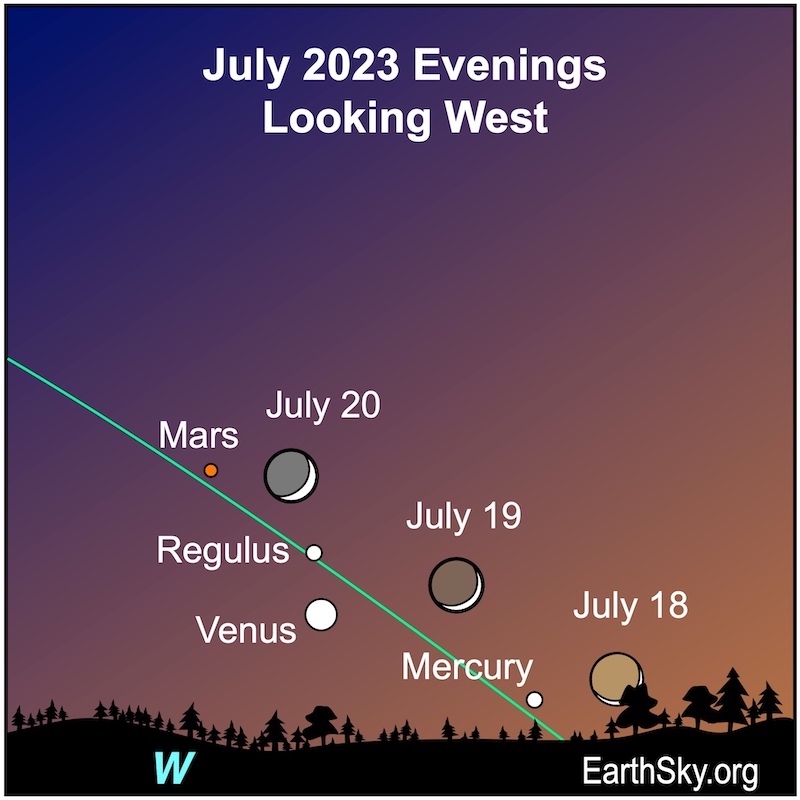All of Earth’s neighboring rocky worlds – the moon, Mercury, Venus and Mars – are gathering together after sunset on July 18, 19 and 20, 2023. Coincidentally, the planets are lined up in order from the sun. Mercury is closest to the horizon and the sun, followed by Venus and then Mars. And the moon will visit each in turn over the course of three evenings.
The moon visits 3 rocky planets
However, when you start looking for these planets after sunset, you won’t first spot them in that order. The first you’ll see is the cloud-covered, closest planet to us – Venus – which far outshines the others. The next brightest is Mercury; however, as it will be closest to the sunset, it’ll be a bit of a challenge to see. But watch over the coming weeks as Mercury eventually climbs higher than Venus. Finally, the dimmest of the three planets is currently Mars, which we are racing away from in our orbit around the sun.
On July 18, a whisper-thin crescent moon will be low to the horizon and closest to Mercury. (If you live in a spot on the globe that is west of the International Date Line, the planet/moon pairings are one day later. For example, Mercury and the moon are closest on July 19. For a more precise star chart from your location, try Stellarium.org.)
On July 19, the slightly growing crescent moon will be nearby – and almost parallel – to brilliant Venus. Mercury is the point of light closer to the horizon. The brightest star in Leo the Lion, Regulus, is by Venus, with Mars on the other side of Regulus.
Finally, on July 20, the crescent moon will be closest to Mars. Because the moon is becoming a fatter crescent, it will easily outshine Mars. As darkness falls and your eyes adjust, you’ll have a better chance of picking out the red planet. You can also use binoculars to track it down.
Star chart for July 18, 19 and 20, 2023

Bottom line: On July 18, 19 and 20, 2023, the moon visits three rocky planets in the west. Mercury, Venus and Mars will all pair up with the moon on back-to-back nights for a spectacular view in the west.
For more great observing events, visit EarthSky’s night sky guide











